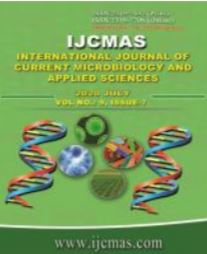


 National Academy of Agricultural Sciences (NAAS)
National Academy of Agricultural Sciences (NAAS)

|
PRINT ISSN : 2319-7692
Online ISSN : 2319-7706 Issues : 12 per year Publisher : Excellent Publishers Email : editorijcmas@gmail.com / submit@ijcmas.com Editor-in-chief: Dr.M.Prakash Index Copernicus ICV 2018: 95.39 NAAS RATING 2020: 5.38 |
Sowing time of rice sometimes get delayed due to lack of assured irrigation or surplus of rainfall. Moreover, no specific varieties have been specifically developed for this purpose. An experiment was conducted to study the effect of sowing dates and varieties on economics and soil properties of direct seeded rice in 2018 at Agricultural Research Station, Dhadesugur in Karnataka. The experimental site was medium black clay soil belonging to the order vertisol with soil pH (8.10), EC (0.65 dS m-1), available nitrogen (244.60 kg ha-1), P2O5 (37.50 kg ha-1) and K2O (336.3 kg ha-1). The experiment comprised of five dates of sowing viz., D1: 2nd Fortnight of June, D2: 1st Fortnight of July, D3: 2nd Fortnight of July, D4: 1st Fortnight of August and D5: 2nd Fortnight of August and four varieties viz., V1: GGV- 05- 01, V2: RNR-15048, V3: BPT-5204 and V4: GNV-10-89. These treatments were laid out in split plot design with three replications. The experimental results revealed that, 2nd fortnight of June recorded higher NPK content and uptake (117.8, 39.3 and 124.1 kg ha-1, respectively), whereas higher available NPK was recorded by crop sown on 2nd Fortnight of August (242.4, 46.53, and 305.9 kg ha-1, respectively). Cost of cultivation of each crop was worked out and income of crop yields was calculated on prevailing market prices. Among the different treatment combinations, D1V2 recorded significantly higher gross returns (Rs. 1,31,564 ha-1), net returns (Rs. 75,550 ha-1) and BCR (2.35) which was on par with D2V2 (Rs. 1,30,502 ha-1, 74,488 ha-1 and 2.33, respectively).
 |
 |
 |
 |
 |